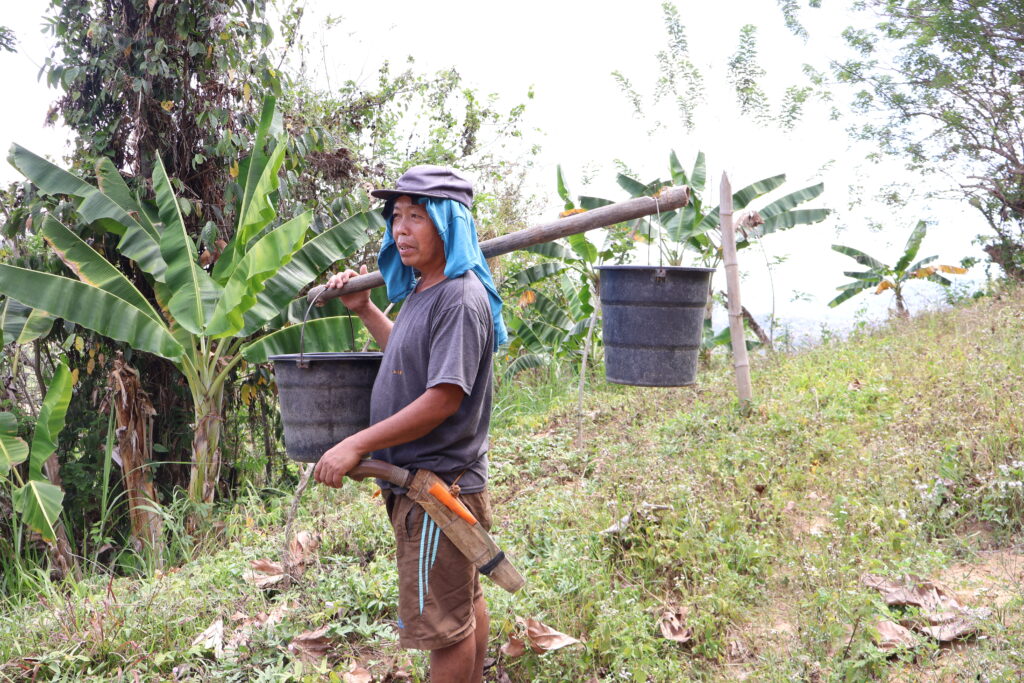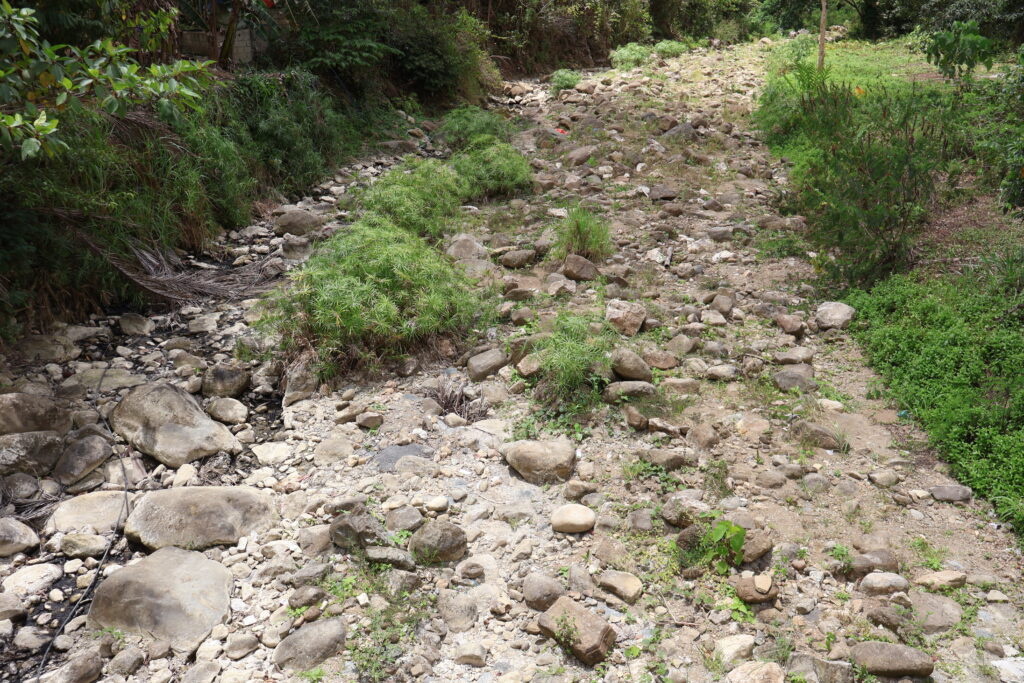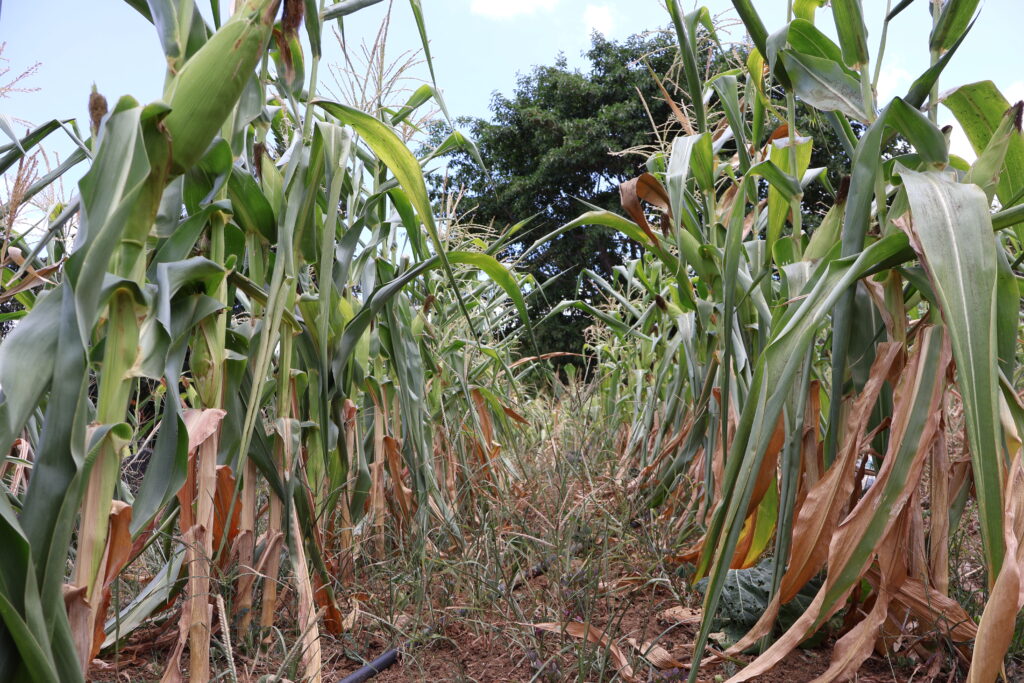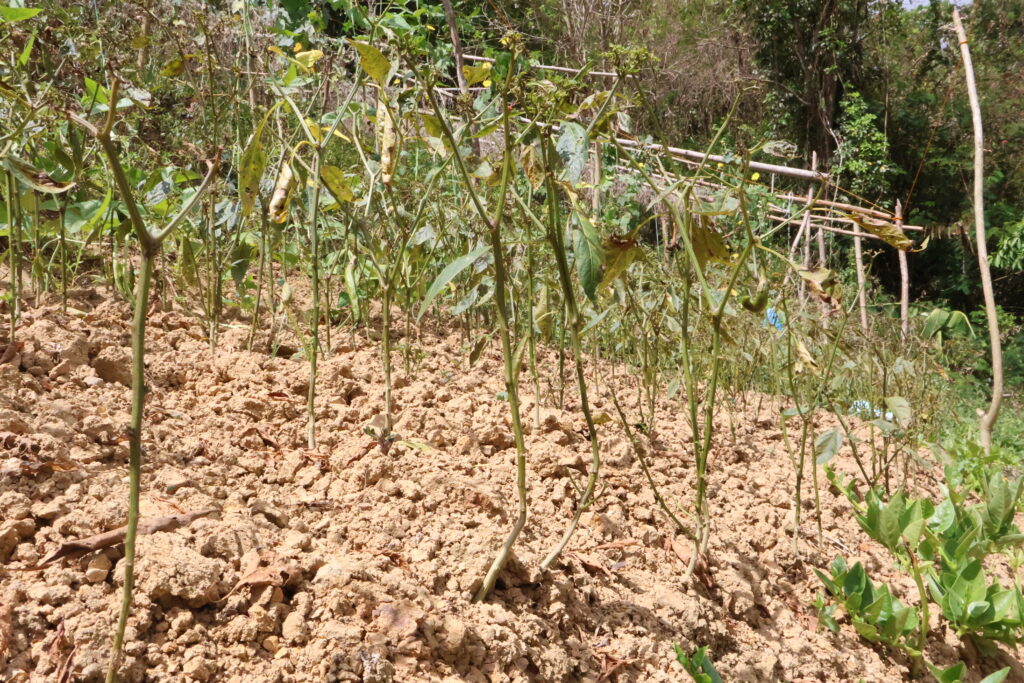Photos by Christian Dave Cuizon
CEBU CITY, Philippines – A typical, healthy cob of sweetcorn usually measures at least six inches. But the ones growing on the farmland of James Tumulak of Brgy. Sirao, Cebu City barely reached three.
Worse, it hardly had any kernels left on them. Corns like these can no longer be sold in downtown markets, he said.
“Nangadaot gyud sila (They really got destroyed),” said Tumulak while crushing the kernels of the weak corncob he grabbed from a dying stalk.
The village peacekeeper (tanod in Cebuano) and farmer was supposed to start harvesting his sweet corn, a variety of corn known for its high sugar content, last April 22.
He planted over 14,000 stalks of sweetcorn on his two-hectare lot in Brgy. Sirao last January. If it weren’t for the El Niño, he could have harvested more than 8,000 kilograms of sweetcorn cobs. And a satisfying smile would usually cross his face when the revenue stats come in.
Instead, Tumulak is counting losses, the most daunting of which are financial ones amounting to no less than P20,000 as Sirao and other 27 villages in upland Cebu City struggled through the El Niño phenomenon.

Unsalvageable pechays found on the two-hectare farmland of James Tumulak in Brgy. Sirao, Cebu City
The drought currently affecting Cebu has devastated much of the crops in the city’s mountain barangays, affecting over 1,000 farmers, and prompting the city government to declare a state of calamity there.
While financial and other in-kind assistance started pouring in from the government, the shortage in water and weeks of no rains still left farmers like Tumulak reeling in what they described as ‘the worst El Niño yet.’
March, April and May are considered the ‘hottest and driest’ months in the Philippines, with few instances of rains expected.
But with the combined effects of the prevailing El Niño, the summer this year is much hotter and drier than usual.
As a result, different parts of the country had to endure weeks – and even months – of little to no rain. Cebu City, particularly the upland barangays, was one of them.
Rain is vital for farmers for multiple reasons. But primarily, it serves as natural irrigation for their crops, especially for areas like the hinterlands in Cebu City where access to running water is difficult.
However, Cebu City, as well as the entire island of Cebu, had been suffering less than normal rainfall for the past five months.
According to data from the Mactan station of the Philippine Atmospheric Geophysical and Astronomical Administration (Pagasa), Cebu began to experience rainfall below normal levels in November 2023.
The El Niño currently affecting all over the country began in 2023, and intensified further between the third and fourth quarter that year.
Drought
In meteorology, the volume of rain recorded in an area is often measured in millimeters. One millimeter of rain is equivalent to one liter of water per square meter.
The biggest reduction of rainfall in Cebu was recorded last March, when it only got 10.2 millimeters of rain for the entire month. The island province normally receives at least 60.9 millimeters of rain every March.
This means that if Cebu only got 10.2 millimeters of rain in the previous month, only 10.2 liters of water were dumped in every square meter – a mere drop compared to the volume of water farmers needed every day.
A small farmland like that of the Isoc family in Brgy. Adlaon, also in Cebu City, needed at least four barrels of water daily to ensure their crops within their one-hectare lot remain healthy.
Each of their barrels can hold at least 150 liters of water.
This summer, however, they struggled to keep these containers full. In turn, they lost hope in harvesting chili peppers, sponge gourd (sikwa in Cebuano, patola in Tagalog), and camote (sweet corn).
Instead of watering them twice in a day, they can only do up to three times per week.
Keeping their crops healthy throughout rainless weeks had also become even more burdensome for the Isocs.

Herminio Isoc, 57, carrying two buckets of water after watering their remaining chili on the family’s farm in Brgy. Adlaon, Cebu City.
The patriarch, Herminio Isoc, had to climb up a hill, lumbering two buckets of water sourced from the faucets of their own house, to water their crops.
Adding to the family’s stress was the fact that the household’s water, sourced from the National Irrigation Administration (NIA), started to dwindle as the weeks progressed.
There are close to 11,000 farmers in Cebu City alone, earlier reports showed, and Barangay Adlaon has the largest number of them among all 80 barangays in the city.
In Adlaon, a hinterland village with a population of 4,413 based on the 2020 Census, almost 90 percent of its residents rely on farming as their source of livelihood.

The upstream portions of the Cotcot River in Brgy. Adlaon has dried up following weeks of no rains.
But as of April 18, more than 140 already reported to barangay officials that they were unable to harvest their crops as the El Niño has already damaged them. The Isocs, for their part, estimated losses going beyond P10,000.
Janey Inocando, barangay secretariat of Adlaon, said they are expecting more as the barangay continues to profile farmers affected by the drought. Furthermore, they projected damages brought by the El Niño phenomenon to reach more than P1 million.
“Kay bisag ang mga dagko nga mga farmlands dinhe, nagreport naman sila sugod nga wa silay maani,” Inocando said.
A first batch of over 100 affected farmers, including the Isocs, already received assistance like sacks of rice and groceries from the city government, the barangay secretariat said.
But the aid from the government can only do so much. Most of the farmers in upland Cebu City still needed water, and hoped the rains would return sooner.
The Cebu City Government, on the other hand, continues to tally the total damage El Niño has left on the city’s agriculture industry.
The Isocs have suffered the pinch of the El Niño before but according to their matriarch, Beatrice, this year’s weather phenomenon was nothing like they had in the previous years. The heat not only weakened their plants but their bodies as well, she said.

Without rains and scarcity in water supply, these stalks of corns on the farmland of James Tumulak in Brgy. Sirao, Cebu City have started to wilt.
When they started seeing cracks on their farm’s plots last March, the family knew there wasn’t going to be a bountiful harvest.
“Kabalo mi naay El Niño pero (wa mi nag expect) ingon ani siya ka dugay,” said Beatrice.
In January, the family invested at least P10,000 to plant chilis and sponge gourds. Before the drought came, they managed to harvest up to 80 kilograms of chilis in a week.
But the last harvest they made that paid off was sometime in February, where they managed to reap income of around P4,000, Beatrice said.
“Paet gyud kaayo. Alkansi gyud mi karun… Kung naa pa lang gyuy tubig ug uwan,” she added.
It was also not the first time for Tumulak to experience El Niño. But this year, its effects were ‘unprecedented’.
Like the Isocs, he did not expect for the drought to intensify and even to prolong.
“Sa una man gud, kadyut ra to. Mga pila ra ka semana, balik na dayun ang uwan… Ang karun, magbuwan na unya pati among tubig panggamit sa balay, magbudget nasad mi,” he explained.
The ongoing El Niño started mid-2023 and will likely end sometime in May, according to the World Meteorological Organization (WMO). It is also one of the five strongest El Niño phenomena the world recorded.

Starved, these chili plants on the Isocs’ farm in Brgy. Adlaon, Cebu City can no longer be saved.
While it has begun to weaken, the WMO’s new secretary-general Celeste Saulo warned that El Niño is likely to turn up the heat even further in 2024.
The naturally-occurring climate pattern, typically associated with increased heat worldwide, usually increases global temperatures in the year after it develops.
“Given that El Niño usually has the biggest impact on global temperatures after it peaks, 2024 could be even hotter,” she added.

Water flowing out of the house James Tumulak installed to connect a nearby spring in their property to an improvised water shed he set up.
Both the Isocs and Tumulak agreed that this year’s ‘record-breaking’ El Niño will not be the last. As soon as this ordeal ends, they plan to be better prepared for the drought.
They considered investing in machines that would help them source water below the ground as well as more containers to store the precious liquid.
But in the meantime, all they could do is pray and hope for the rains to come.
“Maayo unta pag-abot inig Mayo, magsugod na ang uwan,” said Tumulak. / with reports from the Agence-France Presse